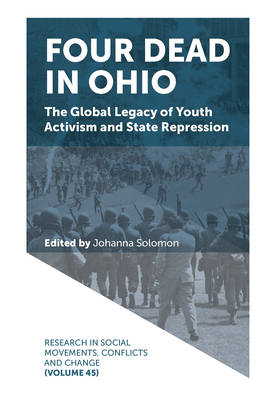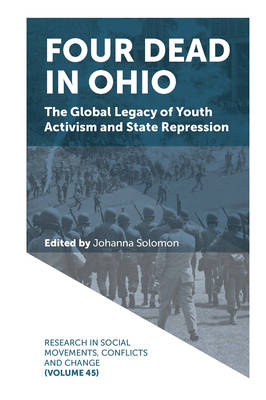
- Afhalen na 1 uur in een winkel met voorraad
- Gratis thuislevering in België vanaf € 30
- Ruim aanbod met 7 miljoen producten
- Afhalen na 1 uur in een winkel met voorraad
- Gratis thuislevering in België vanaf € 30
- Ruim aanbod met 7 miljoen producten
Zoeken
Four Dead in Ohio
The Global Legacy of Youth Activism and State Repression
€ 106,95
+ 213 punten
Omschrijving
This Special Issue of Research in Social Movements, Conflicts and Change reflects upon global student and youth activism 50 years after the infamous May 4, 1970 National Guard shootings of student activists demonstrating against the US wars in Vietnam and Cambodia at Kent State University in Ohio, USA. That incident drew attention to state violence and youth attempts to build peace. However, it was neither the first nor last time student movements faced violent opposition during protests for peace, equity, democracy, and structural change.
This volume examines how youths mobilized for change, faced repression, and were commemorated. The first section focuses on how society views and responds to youth and student political engagement. Chapters assess mobilizing a global movements; how fear of and constraints on youth undermine activism, and the construction student peace programming. The second section highlights how violent repression of students and youth occurs around the world, with chapters addressing how student movements evolve in response to violence. The final section of this volume examines the contestation and commemoration of activism and violence.
Taken together, this volume provides much needed space for the narratives of those youths and students who have fought, and continue to fight, for change.
This volume examines how youths mobilized for change, faced repression, and were commemorated. The first section focuses on how society views and responds to youth and student political engagement. Chapters assess mobilizing a global movements; how fear of and constraints on youth undermine activism, and the construction student peace programming. The second section highlights how violent repression of students and youth occurs around the world, with chapters addressing how student movements evolve in response to violence. The final section of this volume examines the contestation and commemoration of activism and violence.
Taken together, this volume provides much needed space for the narratives of those youths and students who have fought, and continue to fight, for change.
Specificaties
Betrokkenen
- Uitgeverij:
Inhoud
- Aantal bladzijden:
- 256
- Taal:
- Engels
- Reeks:
- Reeksnummer:
- nr. 45
Eigenschappen
- Productcode (EAN):
- 9781800718081
- Verschijningsdatum:
- 6/07/2021
- Uitvoering:
- Hardcover
- Formaat:
- Genaaid
- Afmetingen:
- 157 mm x 231 mm
- Gewicht:
- 476 g

Alleen bij Standaard Boekhandel
+ 213 punten op je klantenkaart van Standaard Boekhandel
Beoordelingen
We publiceren alleen reviews die voldoen aan de voorwaarden voor reviews. Bekijk onze voorwaarden voor reviews.










